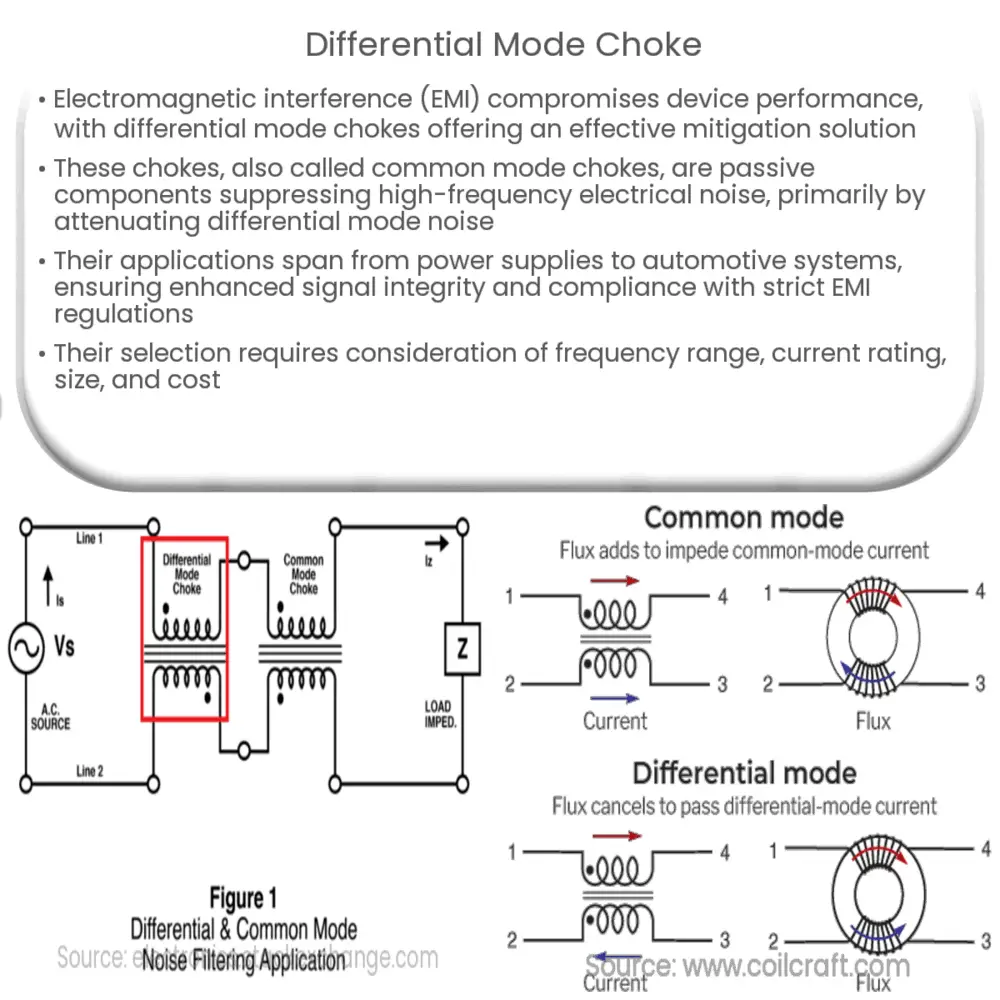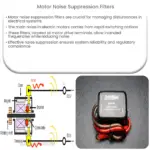A differential mode choke is a passive component that filters high-frequency noise in electrical circuits, enhancing performance and reducing EMI.

Differential Mode Choke: An Essential Component for EMI Suppression
In today’s world of rapidly evolving electronics and increasing usage of various devices, electromagnetic interference (EMI) has become a significant concern. EMI can compromise the performance of a device or even cause it to malfunction. One effective way to mitigate EMI is through the use of differential mode chokes. This article aims to provide a comprehensive understanding of differential mode chokes, their applications, and the benefits they offer.
What is a Differential Mode Choke?
A differential mode choke, also known as a common mode choke, is a passive electronic component that suppresses high-frequency noise in electrical circuits. It primarily functions as a filter to reduce EMI by attenuating differential mode noise, which occurs when currents flow in opposite directions in a pair of conductors. The choke is typically composed of two coils wound around a magnetic core, which creates inductance and helps to impede the flow of unwanted noise signals.
How Differential Mode Chokes Work
Differential mode chokes work by exploiting the properties of magnetic fields and inductance. When current flows through a wire, it generates a magnetic field around the wire. In a differential mode choke, two conductors are wound around a magnetic core, with the windings of each conductor carrying equal and opposite currents. When a differential mode noise signal is present, the currents in the two conductors generate magnetic fields that are in opposition to each other. This causes the magnetic fields to cancel each other out, effectively suppressing the noise signal.
It is important to note that differential mode chokes are most effective at filtering high-frequency noise. At lower frequencies, the impedance of the choke may not be sufficient to provide significant attenuation of the noise signal. For this reason, differential mode chokes are often used in conjunction with other filtering components to provide comprehensive EMI suppression.
Applications of Differential Mode Chokes
Differential mode chokes find applications in a wide range of industries and devices. Some common use cases include:
- Switching power supplies: Differential mode chokes are commonly used in power supplies to minimize high-frequency noise and maintain a stable output voltage.
- Telecommunications equipment: In communication devices, differential mode chokes help to suppress noise in transmission lines and enhance signal quality.
- Computers and consumer electronics: Differential mode chokes are used to reduce EMI in devices like personal computers, tablets, and smartphones, ensuring smooth operation and preventing interference with other electronic equipment.
- Automotive systems: With the increasing prevalence of electronics in automotive applications, differential mode chokes are utilized to minimize noise in various systems, including engine control units and entertainment systems.
Benefits of Using Differential Mode Chokes
There are several advantages to using differential mode chokes for EMI suppression, including:
- Improved performance: By reducing high-frequency noise, differential mode chokes help maintain the optimal performance of electronic devices and systems, ensuring their reliability and stability.
- Enhanced signal integrity: In telecommunications and data transmission applications, differential mode chokes contribute to clearer signals and reduced errors, resulting in improved overall communication quality.
- Compliance with regulations: Many electronic devices are required to meet strict EMI regulations to ensure they do not cause interference with other equipment. The use of differential mode chokes helps achieve compliance with these standards, enabling manufacturers to market their products globally.
- Compact size: Differential mode chokes can be designed to be relatively small, making them suitable for use in space-constrained applications, such as smartphones and other portable electronics.
Selecting the Right Differential Mode Choke
When choosing a differential mode choke for a specific application, several factors need to be considered:
- Frequency range: The choke’s effectiveness in attenuating noise depends on its impedance, which varies with frequency. Select a choke that provides the desired level of noise suppression within the frequency range of interest.
- Current rating: The choke must be able to handle the current flowing through the conductors without overheating or suffering from performance degradation. Ensure that the choke’s current rating is sufficient for the application.
- Physical size: In some cases, the size of the choke may be a critical consideration, especially in compact electronic devices. Choose a choke that fits within the available space while still providing the required performance.
- Cost: As with any electronic component, cost is always a factor. Consider the trade-offs between performance, size, and cost when selecting a differential mode choke.
Conclusion
Differential mode chokes play a crucial role in suppressing EMI and ensuring the reliable performance of electronic devices across various industries. By understanding their operation, applications, and selection criteria, designers and engineers can make informed decisions when incorporating these components into their designs. As technology continues to advance, the demand for effective EMI suppression solutions like differential mode chokes will only grow, making them an essential component in modern electronics.



